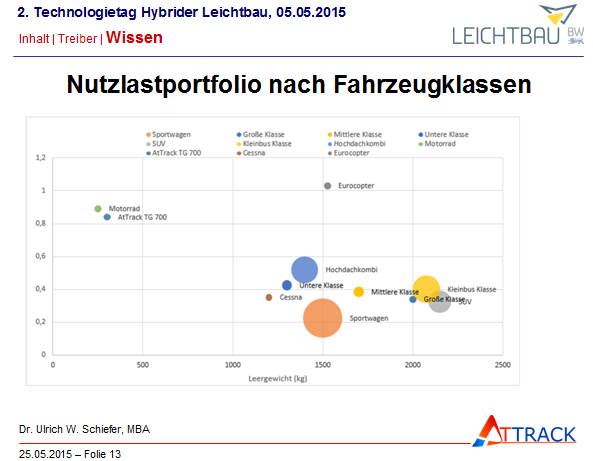„E-cars are not clean at all, as their emissions already occur at the power plant“.
Common statement to be seen in quite a lot of magazines these days. Prejudice which could be clarified with another question? What if the E-car driver charges only with eco-power or solar power ideally from own production? Big advantage of the E-car – when operated from the private home – is its flexibility in the point in time, when charging starts.
Schiefer denominates the E-car as the night storage heater of the new century: save the grid stability and own money by charging at oversupply.
AtTrack managing director Schiefer spans a wide spectrum with his arguments. He asked his audience which one of 2 solutions appears to be superior for them:
You ride 12 km by bicycle or use your latest state of technical car.
And the answer is a question again: depends on the food of the bicycle rider. Should he prefer roast beef over vegetables,… his CO2 balance sheet could be up to threefold higher compared to the use of the combustion driven car.
Are there other low hanging fruits for a responsible individual to save CO2 in his private field:
- The Bundesverband der Lungenärzte assumes that all open chimneys feeded by wood emit in Germany as much pollutants as the whole vehicle population and recommends to buy ovens on latest standards with catalysts and replace the old technology on a short note.
E-Mobility will appear – that is the strong impression, Schiefer has on that behalf.
But long vehicle lifes and long keeping cycles of the existing vehicle population and a high price of batteries for E-vehicles makes it difficult to provide quick wins and expand the market massively on a short note.
The path to pure electric driving would be plastered by a multitude of high performing hybrid cars.
Picture source: Dr. Günter Renz
Literary source: Ratgeber ‚Heizen mit Holz‘, Umweltbundesamt 2012

